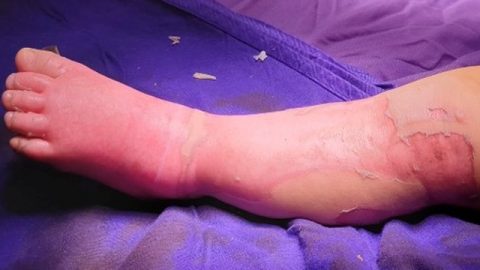What happens when a patient has end-stage chronic renal disease?
The kidney will loose its functions resulting in inability to filter blood or remove excess fluid, increase blood pressure, heart failure, anemia, osteoporosis …
Chronic kidney failure is known as a “silent” disease because the symptoms vary from person to person, patients may be fatigue, loss of appetite, swelling of the limbs or whole body, shortness of breath, nausea, weight loss, insomnia, cramps, itching… and it is usually diagnosed at end stage. Depending on the clinical symptoms, family situation, and economic condition, parents can coordinate with doctor to choose one of the following treatment methods:
- Peritoneal dialysis:
Peritoneal dialysis is used to remove excess water, electrolytes, and toxins from the body. There are 2 options for peritoneal dialysis:
1.1. Continuous peritoneal dialysis (CAPD)
The patient’s family is instructed by the medical staff to perform at home, usually about 4 times per day (depending on doctor’s prescription).
1.2. Automatic peritoneal dialysis (APD)
The patient’s family is instructed by medical staff to perform at home at night, when the patient sleeps.
Advantages:
- Perform at home, convenient environmental and space conditions.
- Time arrangement depends on each family’s conditions.
- Children can go to school and maintain normal activities.
- Reduce the risk of infectious diseases such as HIV, hepatitis B.
Limits:
- Risk of infection, peritonitis…
- Cyclic dialysis or artificial kidney
This procedure is performed in the hospital. The patient was inserted an arteriovenous anastomosis and connected to an artificial kidney. During hemodialysis, blood will be passed through a filtration system called a “dialysis device”. After the treatment ends, the blood is returned to the body. Normally, patients go to the hospital for dialysis about 3 times per week, with a fixed schedule, each time lasts about 4 hours.
Advantages:
- Performed at the hospital, ensuring sterility.
- The family does not have to prepare equipment.
Limit:
- Risk of anemia, transmission of infectious diseases such as HIV, hepatitis B.
- A lot of time in the hospital.
- Travel distance
- For each dialysis session, 2 large needles are inserted to establish an infusion.
- Limit fluid intake (eating) especially on non-dialysis days.
- Kidney transplant:
Kidneys are taken from a kidney donor and then put into the patient’s body. The transplanted kidney replaces the function of the old kidney.
There are currently two sources of kidney donations: from living people who are family members or other suitable people and from people who volunteer to donate kidneys after death. Kidney transplantation has a very high success rate. After a kidney transplant, the patient needs to take medicine as prescribed by the doctor every day. Successful kidney transplants bring life and improve the quality of life for patients. If the transplanted kidney works well, the patient does not need dialysis or peritoneal dialysis.
Advantages:
- Improve quality of life, go to school and live like a normal person.
Limit:
- Use of rejection drugs and adherence to treatment.
Nurse. Nguyen Thi Anh Tuyet
Department of Nephrology and Dialysis





